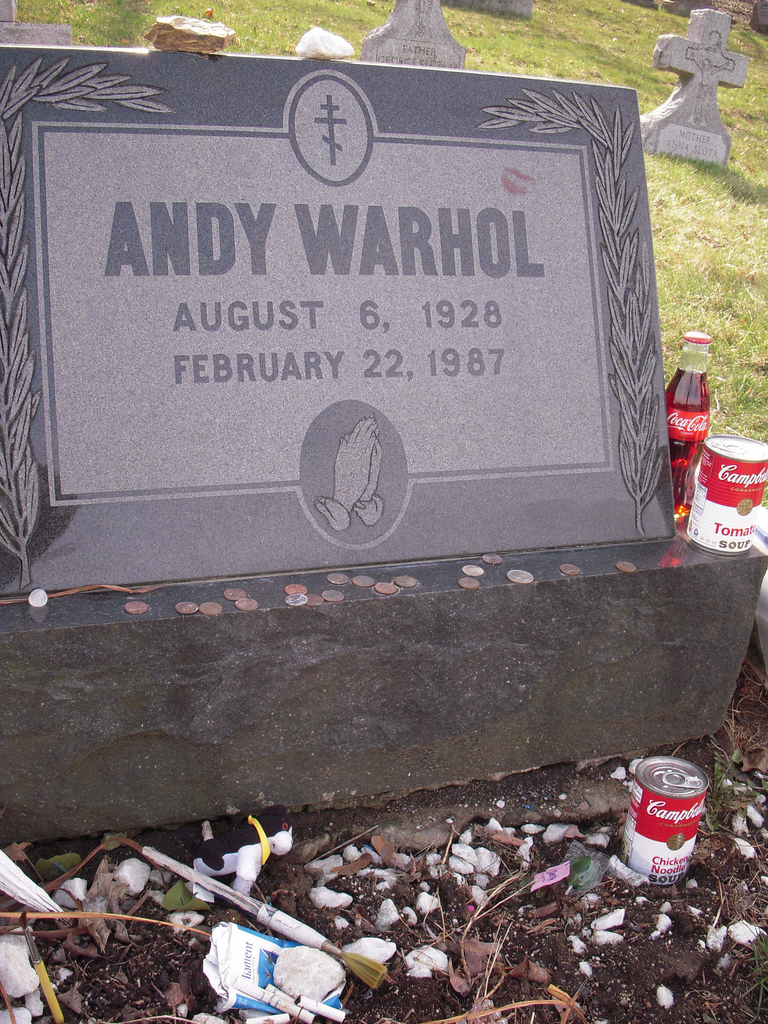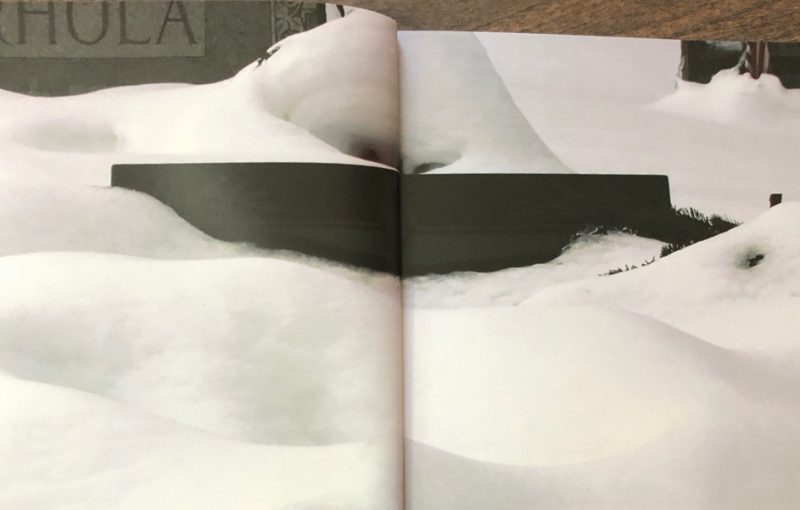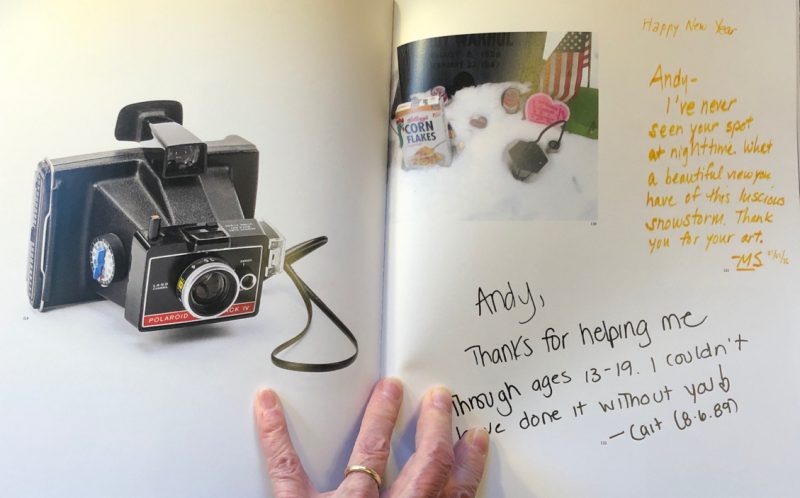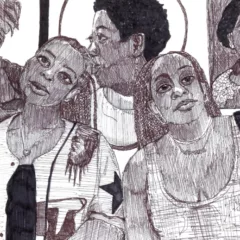You can listen to Roberta read this review on Apple Podcasts and Spotify. Thank you to Kyle McKay for composing our original intro and outro!
Sometimes a community needs a project to see itself as a community. Take for example a group in which the members hail from all over the world, and their only commonality is — they’ve made a pilgrimage to the site of someone they either love, hate, or are fascinated with. There’s no group leader nor do members feel themselves part of something larger.
Enter Madelyn Roehrig, originator of a project for one group of pilgrims, those who, for whatever reason, make their pilgrimage to the grave of Andy Warhol, in a small cemetery in Bethel Park, PA, outside Pittsburgh. Roehrig’s project, “Figments: Conversations with Andy” began as a conversation between the living artist, Madelyn, and the departed soul, Andy. (Disclaimer: I am a friend of Madelyn’s and a fellow pilgrim/participant in this project — see post from my 2009 visit.)
Madelyn Roehrig, a practicing professional artist working in photography and video, once lived near Bethel Park, PA, and would drive over to commune with Andy at his grave. The cemetery, it should be mentioned, is small, quiet, situated on a hill, away from the nearby roads and has a pleasing vista with trees in the distance. It’s an almost perfect place for contemplation. Madelyn was looking for conversation, inspiration, and camaraderie from a fellow artist. You might argue that the communication was a bit one-sided but Madelyn received many an inspiration from her conversations, among them, the brilliant idea to start her project to document, archive and collectivize the far-flung pilgrims to Andy’s grave, who, she discovered came from different walks of life and places around the world and mostly brought an offering for Andy when they visited (Campbell’s soup can, fright wig, hand-written notes, cigarettes, flags and other tchotchkes).

Catapulting herself into this universe of graveside fandom, which pre-existed her arrival, Madelyn single-handedly turned the random fandom on its head and made it both deeper and more meaningful, with her project to archive the mementoes; talk with, video and audio record some of the visitors; and create a community of anyone who was up for it to rally with her — in the real world (or on the satellite feed at the Warhol Earth Cam!) for Andy birthday parties, and other Andy-related events .
Madelyn has a 10-year archive of her daily photos of Andy’s grave — Summer, Fall, Winter and Spring; and she has made a number of documentary movies from her videos, featuring curators and art historians and pilgrims, and these films have been shown at the Andy Warhol Museum.
Now, after years of culling through her archive, the artist is debuting her first book of a series of four: “Andy Can You Hear Us?, Volume 1 – Winter,” which is available at the book website, at The Andy Warhol Museum gift shop and currently on Amazon.

As with the other elements of this project, the book contains excellence and whimsy, beauty, poignance and humor. For a project that revolves around a dead person and a cemetery, the 80-page, softcover book is vibrant and alive. Using Madelyn’s photos and video stills as its source (along with photos by Tom Little of the individual mementos left at the grave), Volume 1, Winter, is laid out in an extraordinarily lovely way, from the two-page spread of the tombstone buried in snow to the individual portraits of the mementos left at the grave. Serious essay texts alternate between black text on white and white text on black: A very nice introduction by Eric Shiner, former director of the Andy Warhol Museum, leads off the written content. Madelyn’s essay is a soulful telling of the origins of the project and the growth of the work through the years. There’s a strong contextual essay by Robert Bailey, Associate Professor of Art History, University of Oklahoma, and two full pages of thanks, acknowledging those who’ve helped the artist along the way — her community.

Floating throughout the book, untethered from their materiality except for the words, are the hand-written notes left at the grave, many thanking Andy for inspiring them; some asking questions like “Why do you wear a wig?” and one memorable note, all caps, declaring “Warhol doesn’t want your fucking soup cans.”
While the notes do float, they anchor the book in the reality of fandom, which also tethers Madelyn’s project. But this is not just a picture book, or fanzine; nor is it soft and squishy. Like Andy Warhol himself, the book, and Madelyn Roehrig’s project are serious and darkly compelling. Why people come to the grave — in spite of the notes written which confess their motives — is obscure and buried in human behavior and need for connection. Beyond the art history, the story of this project is about people, the celebration of life and death and community.
If you’re not yet in this community, you could be. Peep the Earthcam. Make the pilgrimage. Some day it will be safe to visit in person, and I for one have it on my list.









